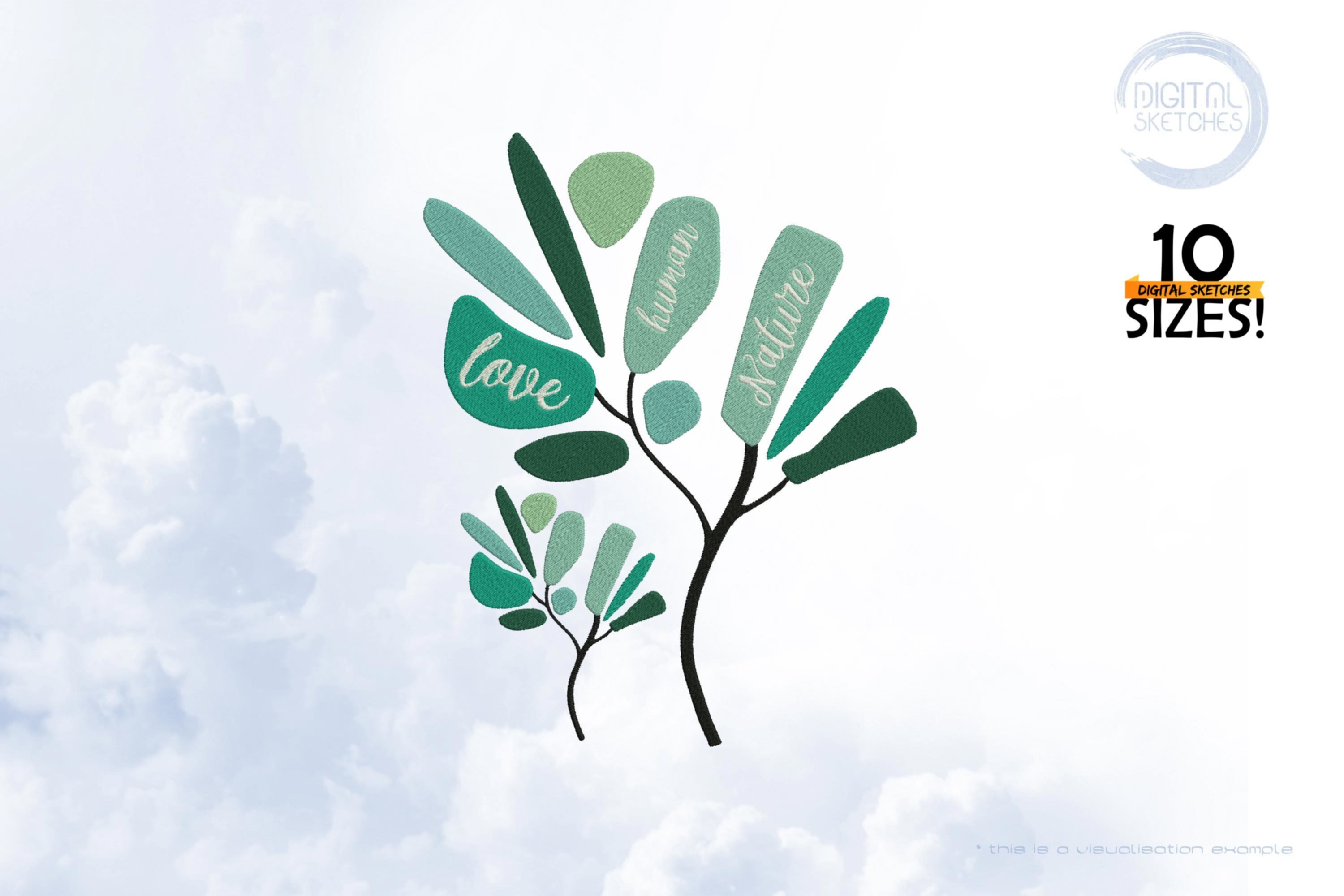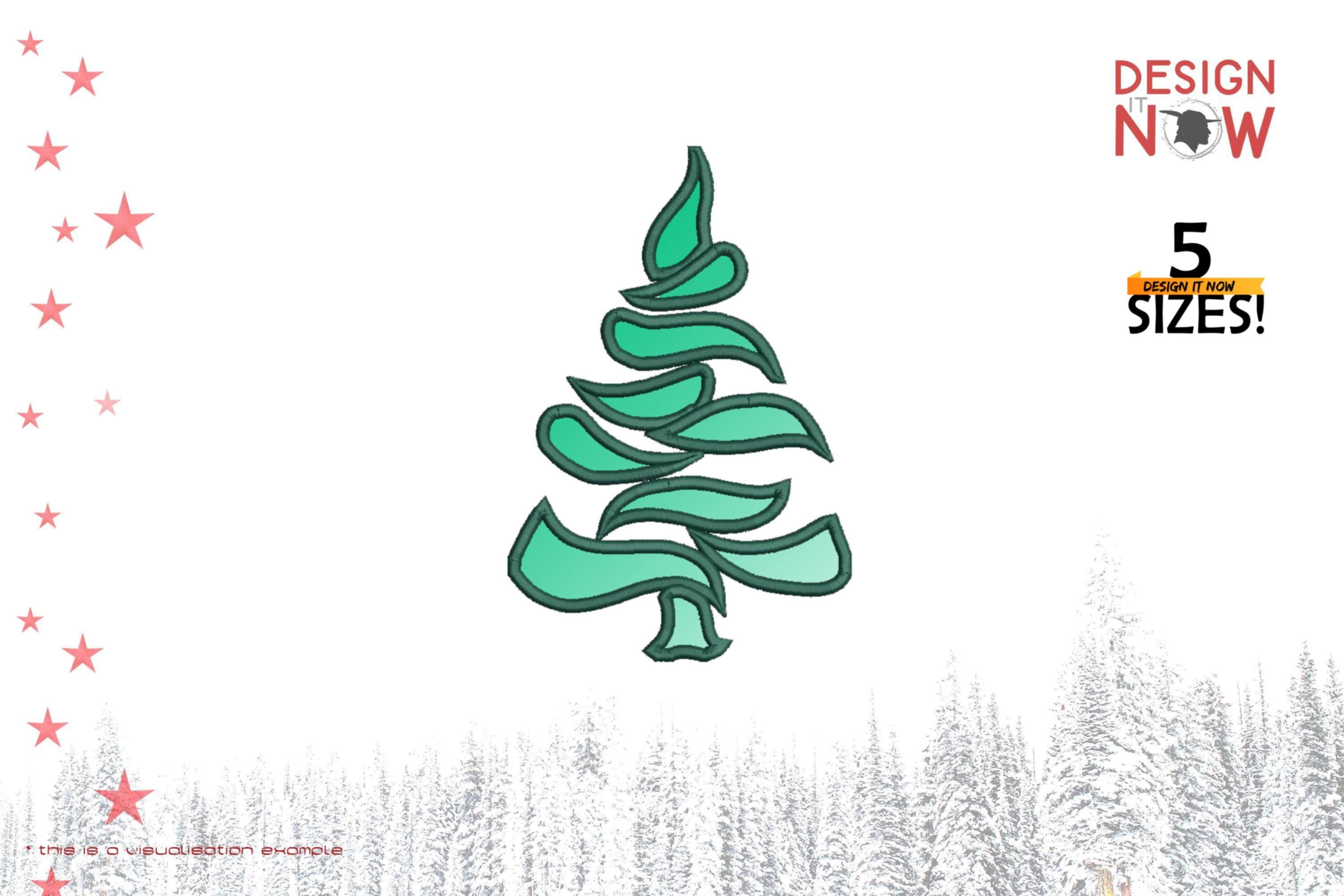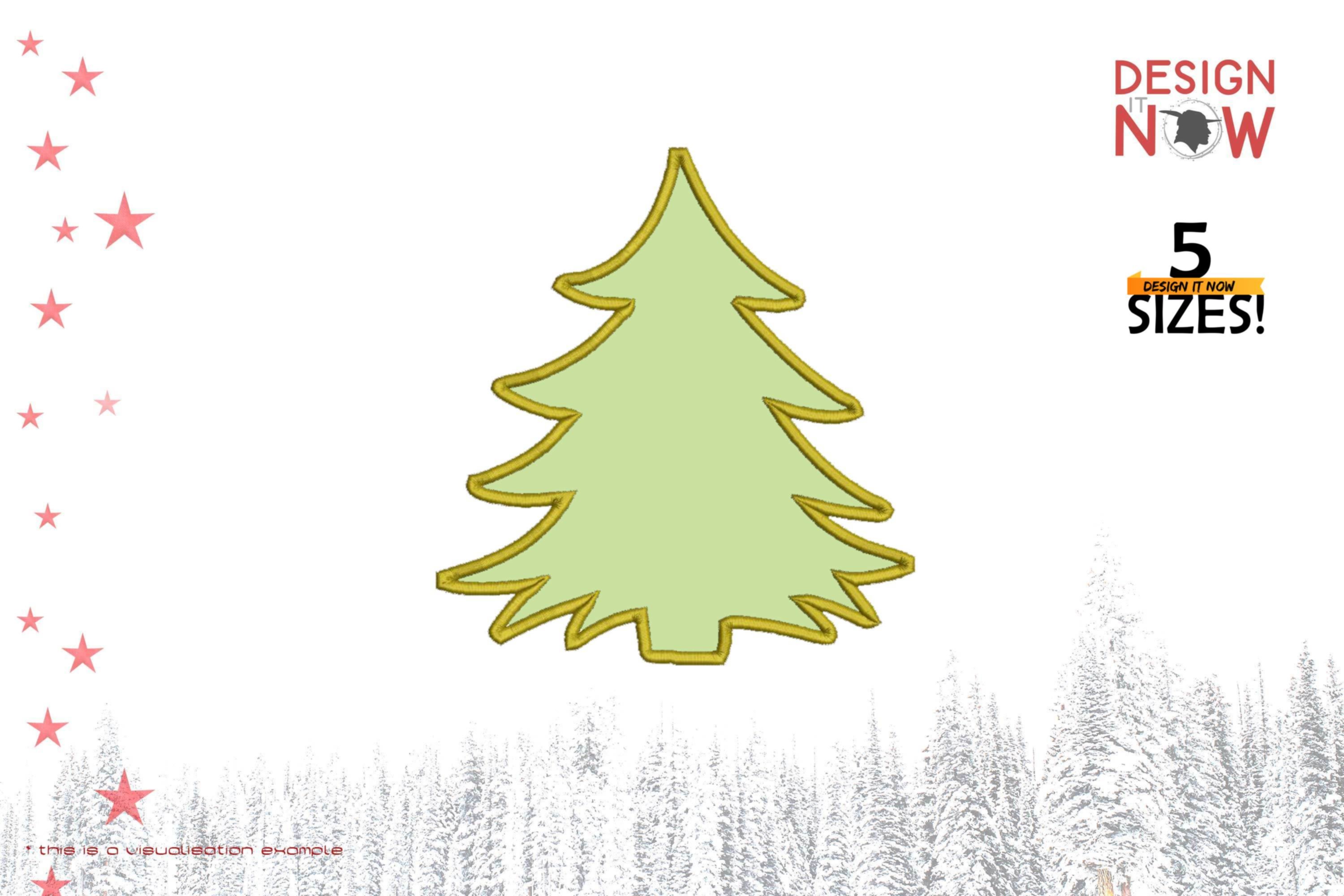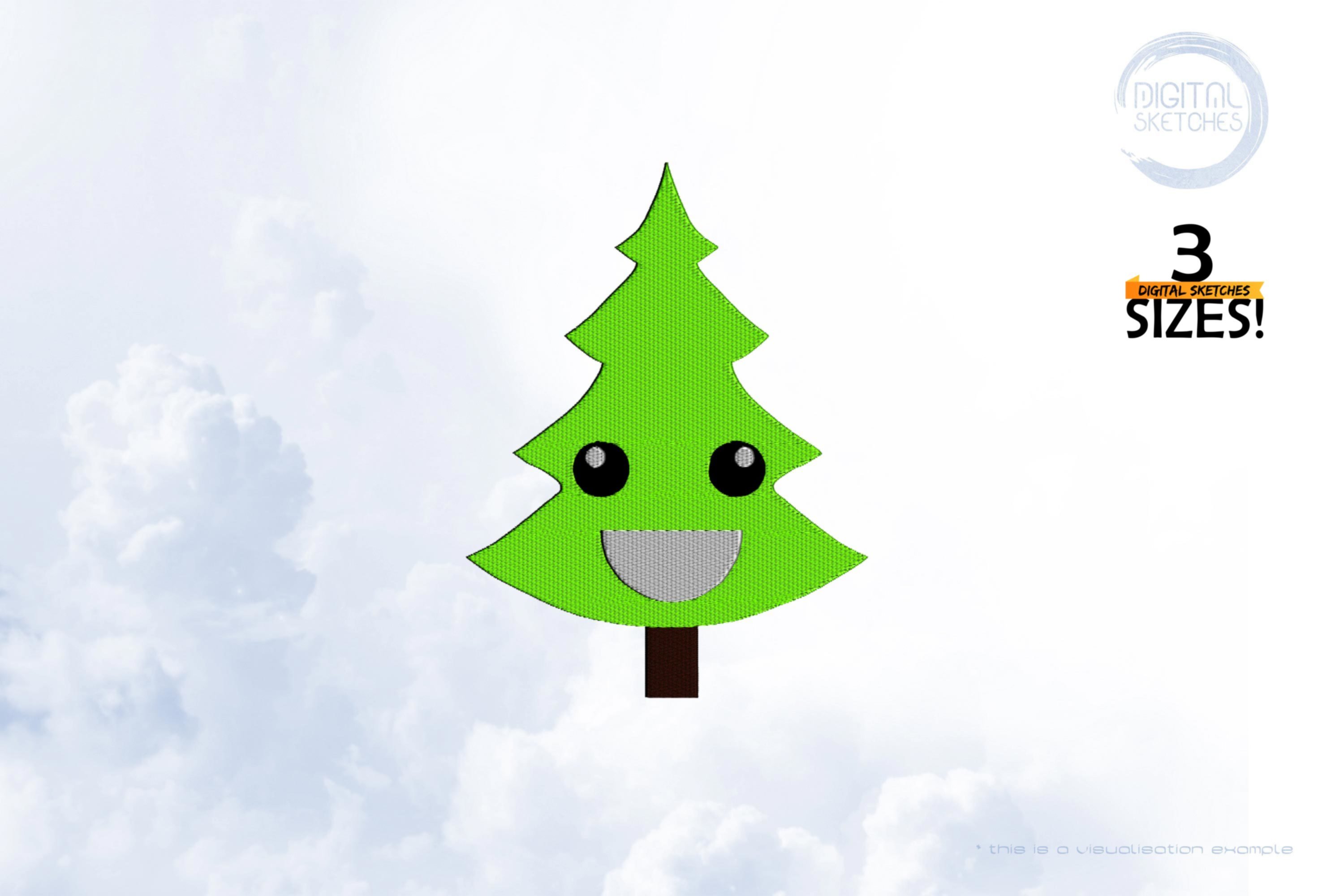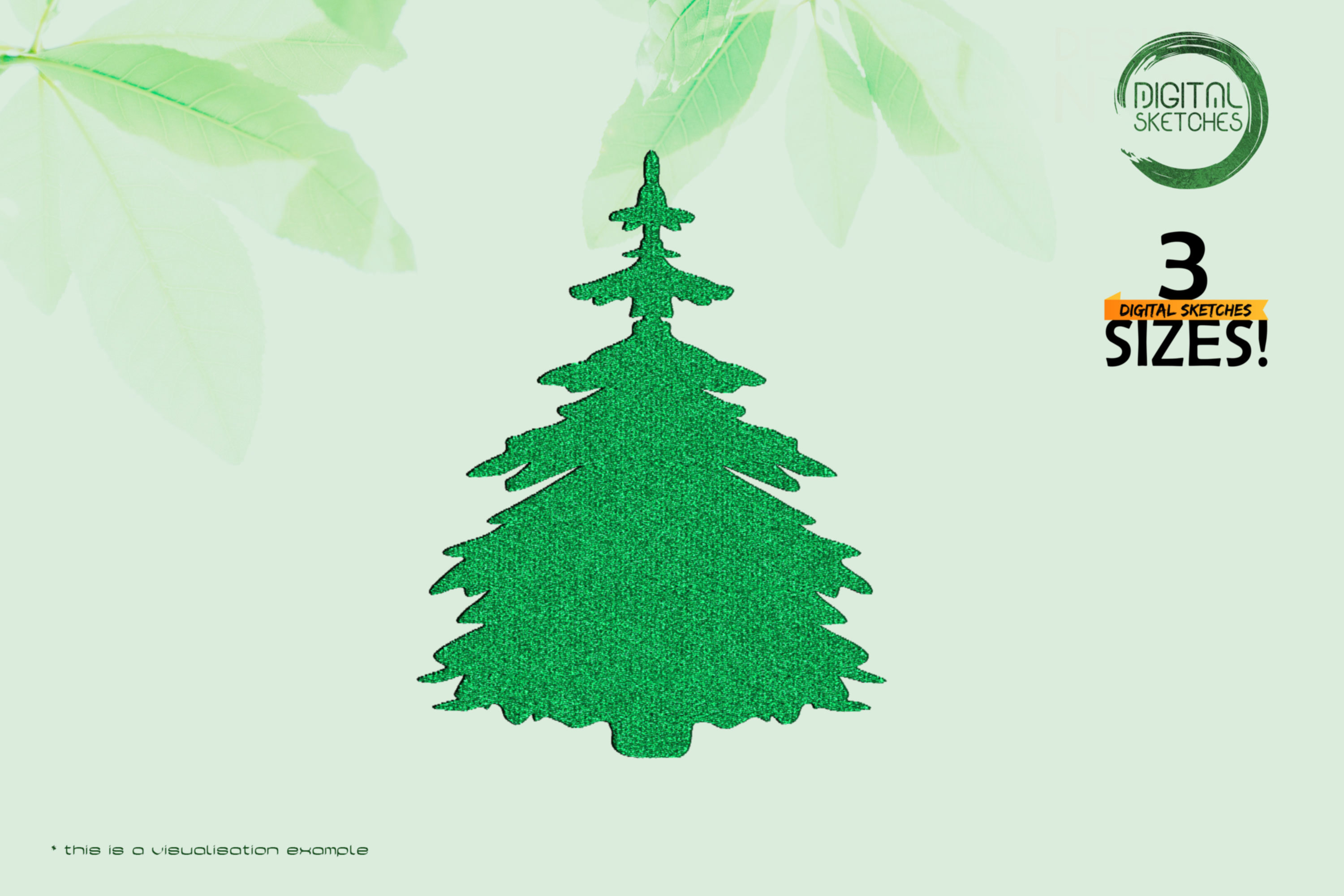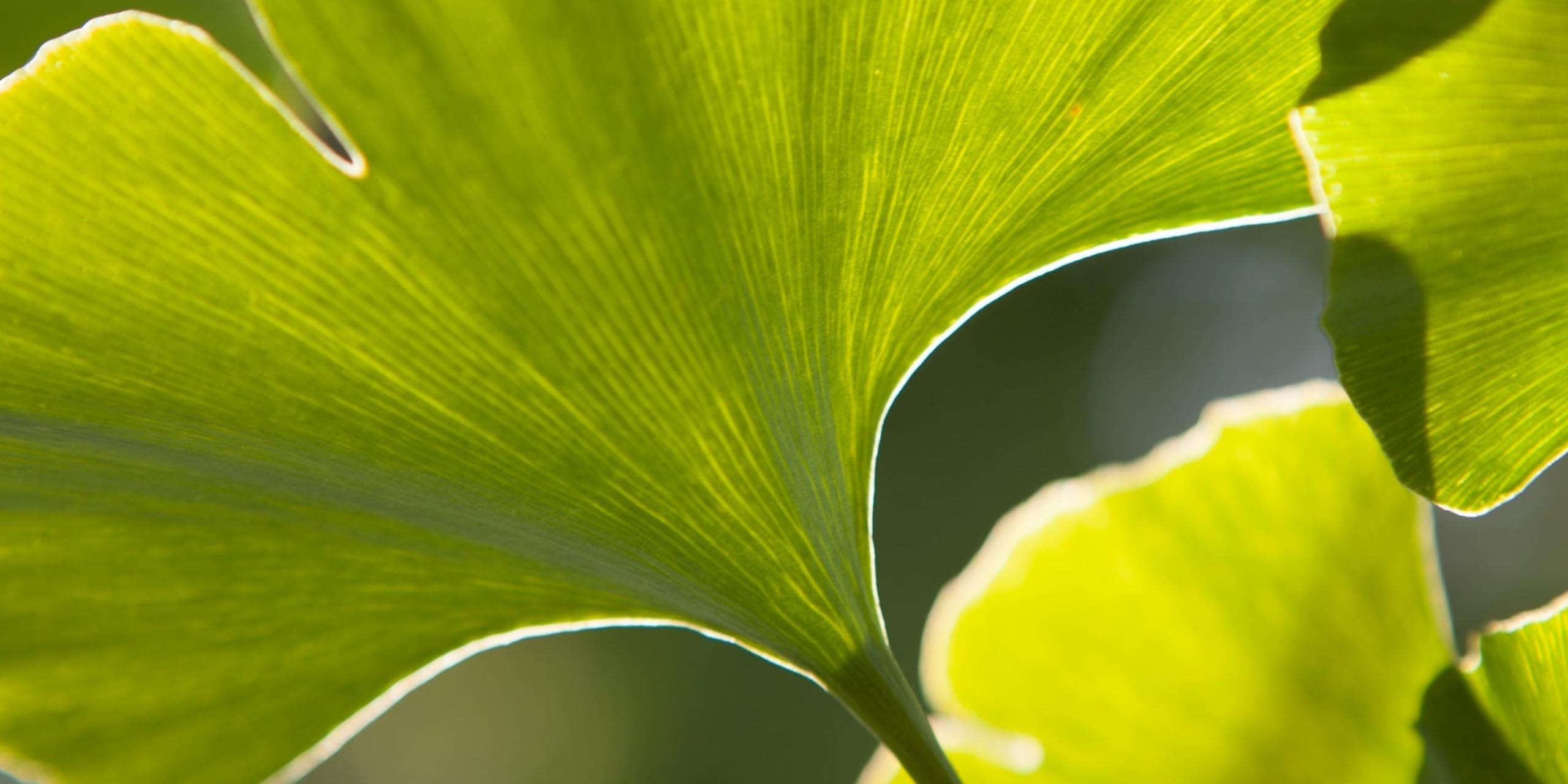
Trees
A tree is generally understood to be a woody plant consisting of a root, a tall trunk rising from it, and a leafy crown.
Botany defines trees as perennial and woody seed plants that have a dominant shoot axis that increases in girth through secondary growth of thickness. These characteristics distinguish a tree from shrubs, ferns, palms, and other woody plants. In contrast to their developmental predecessors, most trees also have much more differentiated leaf organs that arise from multiple branched lateral shoots (long and short shoots). The trunk, branches and twigs elongate every year through the sprouting of terminal and lateral buds, becoming lignified in the process and continuously increasing in girth. In contrast to shrubs, it is a special characteristic of trees that the terminal buds dominate over the lateral buds (apical dominance) and thus a predominant main shoot develops (acrotonia).
Arborescent life forms occur in various plant groups: "True" trees are the deciduous trees among the angiosperms and the arborescent gymnosperms, which include conifers such as the conifers, but also Ginkgo biloba (as the only extant representative of the ginkgo family) and numerous representatives of the pinnate gymnosperms (Cycadophytina). The most peculiar tree is probably Welwitschia mirabilis, which is found in Namibia and whose trunk remains in the ground. In addition, the palms and the tree ferns can also form a tree-like shape. However, these groups do not possess true wood (secondary xylem) and are therefore not considered trees. A special position takes the dragon tree (Dracaena). Although this belongs to the monocotyledons, it has an atypical secondary thickness growth.
%
Fox Beatiful Things
A fox is a representative of the dog family (Canidae). In German usage, this usually means the red fox, more generally the genus group of the true foxes. The word fox has its origin in the Middle High German term vuhs for the male red fox (Canis vulpes). The related vocabulary fuhs (Old High German), vos (Dutch) and fox (English) are synonymous. The feminine form of the word changed from Old High German voha to Middle High German vohe, Gothic faúho, and Old Icelandic foa. The word Fähe, which in hunter and biologist language refers to female red foxes in particular and female canids in general, also has its origin in the Old High German feminine form.The totality of species trivially referred to as "foxes" is not a closed descent community (clade), but a group of more or less closely related species and genera of dogs, which through convergent evolution resemble each other externally to a greater or lesser extent (polyphyly). The similarities of all these taxa are, however, exhausted in a rather small growth, mostly rather short legs and a bushy tail. Many, especially tropical representatives are also characterized by relatively large ears. Traditionally, species referred to as "foxes" are found in two genus groups of the dog family: the true foxes (Vulpini) and their sister group, the true dogs (Canini).According to current kinship analyses based on DNA comparisons, these traditionally held generic groups are also not closed ancestral communities. Instead, the "foxes" are distributed among three clades: a gray fox clade, a red fox clade, and a clade of exclusively South American wild dogs.Product Number: EA00009Product Name: FreeThis design comes with the following sizes:Size: 10.10"(w) X 7.79"(h) (256.6 X 197.8mm) The following formats are included in the file you will receive: .DST .EXP .JEF .PES .VP3 .XXX .VIP .HUSYou MUST have an embroidery machine and the software needed to transfer it from your computer to the machine to use this file. This listing is for the machine file only - not a finished item.Fox Saying Wild And Free Animals Machine Embroidery Design, True Foxes, Canis Vulpes, Dog Family Animal World Embroidery Pattern, Zoology Designs, Nature Embroidery Art, Animalia, DIY Project Idea, Unique Digital Supplies For Embroidery Machines
US$1.10* US$4.40* (75% saved)
%
Apple Tree Fruit Applique Design
Apples (Malus) form a plant genus of the pome fruit family (Pyrinae) in the rose family (Rosaceae). The genus comprises about 42 to 55 species of deciduous trees and shrubs from forests and thickets of the northern temperate zone in Europe, Asia and North America, which have also given rise to a large number of often difficult-to-distinguish hybrids. By far the best known and economically very important species worldwide is the cultivated apple (Malus domestica). The species of the genus Apples (Malus) are deciduous trees or shrubs. They are mostly unbranched. The alternate stem leaves are petiolate. The simple leaf blade is oval to ovate or elliptic. The leaf margins are usually serrated, rarely smooth, and sometimes lobed. The pedunculate flowers of apple trees are solitary or in umbellate panicled inflorescences. Commonly known are the more or less rounded, edible fruits. In some species they are inedible raw. The fleshy tissue normally referred to as the fruit does not arise from the ovary but from the flower axis; the biologist therefore refers to pseudo-fruits. More precisely, the apple fruit is a special form of the aggregate bellows fruit. A bellows consists of an ovary that grows together with itself. Within the pulp, the bellows-like carpel develops into a parchment-like case. The pulp itself contains, at most, scattered stone cell nests. Product Number: E00231Product Name: Apple AppliqueThis design comes with the following sizes:Size: 3.04"(w) X 3.12"(h) (77.2 X 79.2mm) Size: 5.08"(w) X 5.39"(h) (129.1 X 136.8mm) Size: 6.22"(w) X 6.61"(h) (157.9 X 167.8mm) Size: 7.73"(w) X 8.24"(h) (196.3 X 209.3mm)The following formats are included in the file you will receive: .DST .EXP .JEF .PES .VP3 .XXX .VIP .HUSYou MUST have an embroidery machine and the software needed to transfer it from your computer to the machine to use this file. This listing is for the machine file only - not a finished item.Apple Tree Fruit Applique Machine Embroidery Design, Apple Tree Fruit mbroidery Pattern, Food Designs, Embroidery Art, DIY Project Idea, Unique Digital Supplies For Embroidery Machines
US$1.10* US$4.40* (75% saved)
%
Tree Nature Human Love
A tree is generally understood to be a woody plant consisting of a root, a tall trunk rising from it, and a leafy crown. Botany defines trees as perennial and woody seed plants that have a dominant shoot axis that increases in girth through secondary growth of thickness. These characteristics distinguish a tree from shrubs, ferns, palms, and other woody plants. In contrast to their developmental predecessors, most trees also have much more differentiated leaf organs that arise from multiple branched lateral shoots (long and short shoots). The trunk, branches and twigs elongate every year through the sprouting of terminal and lateral buds, becoming lignified in the process and continuously increasing in girth. In contrast to shrubs, it is a special characteristic of trees that the terminal buds dominate over the lateral buds (apical dominance) and thus a predominant main shoot develops (acrotonia). Product Number: E00477Product Name: TreeThis design comes with the following sizes:Size: 2.91"(w) X 3.61"(h) (74.0 X 91.8mm) Size: 3.24"(w) X 4.02"(h) (82.2 X 102.2mm) Size: 3.59"(w) X 4.46"(h) (91.2 X 113.4mm) Size: 3.98"(w) X 4.96"(h) (101.2 X 126.0mm) Size: 4.43"(w) X 5.51"(h) (112.6 X 140.0mm) Size: 5.46"(w) X 6.80"(h) (138.8 X 172.8mm) Size: 6.07"(w) X 7.56"(h) (154.2 X 192.0mm) Size: 6.75"(w) X 8.40"(h) (171.4 X 213.4mm) Size: 7.50"(w) X 9.33"(h) (190.4 X 237.0mm) Size: 10.97"(w) X 13.66"(h) (278.6 X 347.0mm) The following formats are included in the file you will receive: .DST .EXP .JEF .PES .VP3 .XXX .VIP .HUSYou MUST have an embroidery machine and the software needed to transfer it from your computer to the machine to use this file. This listing is for the machine file only - not a finished item.Tree Nature Human Love Machine Embroidery Design, Woody Seed Plants Embroidery Pattern, Wood Plant Embroidery Art, Botany DIY Project Idea, Original Digital Supplies For Embroidery Machines, Artsupplies For Handmade Embroidery Projects, Quality Embroidery Digitizing
US$1.10* US$4.40* (75% saved)
%
Christmas Tree V
A Christmas tree is a decorated coniferous tree that is placed indoors or outdoors at Christmas time. Traditional places of installation are churches and homes. Tree decorations are usually strings of lights, candles, Christmas tree balls, tinsel, angels or other figures. This Christmas custom spread throughout the world from German-speaking countries in the 19th century. Actually, only evergreen plants are considered for decoration in winter, so their use in winter does not yet show a line of tradition to the Christmas tree. Evergreen plants embody life force, and that is why it is often believed that in earlier times people believed they were bringing health into their homes by decorating their homes with greenery. The Romans garlanded their houses with laurel branches at the turn of the year. By decorating a tree at the winter solstice, the cult of Mithras honored the sun god. In northern regions, too, fir branches were hung in the house early in the winter to make it difficult for evil spirits to enter and settle in, and at the same time the greenery gave hope for the return of spring. Christmas, also called Christmastime called the Feast of Christmas or the Feast of the Holy Christ, is the feast of the birth of Jesus Christ in Christianity. The feast day is December 25, Christmas Day, also known as the Solemnity of the Nativity of the Lord (Latin: Sollemnitas in nativitate Domini), the celebrations of which begin on the evening before Christmas Eve (also Christmas Eve, Christmas Night, Chrismastime). December 25 is a public holiday in many states. In Germany, Austria, the Netherlands, Switzerland and many other countries, December 26 is added as a second Christmas holiday, which is also celebrated as St. Stephen's Day.Christmas is usually celebrated with family or friends and with giving gifts to each other. In German-speaking and some other countries, gifts are usually given in the evening on December 24 and are considered the most prominent part of the Christmas celebration. In English-speaking countries, gifts are usually given on the morning of Christmas Day. The gift-giving ritual refers to mythical gift-bringers such as the Christ Child or Santa Claus, some of whom are also played. Such rites, like the festival as a whole, serve to strengthen family relationships. Many countries associate other customs of their own with Christmas. Attending a church service on Christmas Eve, the night or morning of December 25 is part of the festive tradition for many people.In Western Christianity, Christmas is one of the three main festivals of the church year, along with Easter and Pentecost. As a church holiday, December 25 is documented since 336 in Rome. It is not clear how this date came about.Emperor Aurelian had set December 25, 274, as an empire-wide feast day for the Roman sun god Sol Invictus; early Christians drew parallels between this sun god and "Christ, the true sun" (Christus verus Sol). The custom of giving presents to children at Christmas in the way that is customary today dates back to the Biedermeier period and was initially restricted to upper middle-class circles, because only they had the living room, which was used like a stage, at their disposal, could afford a private Christmas tree, and could choose children's gifts from the increasingly diverse assortment of toys. Product Number: A00259Product Name: TreeThis design comes with the following sizes:Size: 2.64"(w) X 3.95"(h) (67.1 X 100.4mm) Size: 3.17"(w) X 4.74"(h) (80.4 X 120.4mm) Size: 3.69"(w) X 5.53"(h) (93.8 X 140.4mm) Size: 4.48"(w) X 6.71"(h) (113.8 X 170.4mm) Size: 5.24"(w) X 7.85"(h) (133.0 X 199.4mm)The following formats are included in the file you will receive: .DST .EXP .JEF .PES .VP3 .XXX .VIP .HUSYou MUST have an embroidery machine and the software needed to transfer it from your computer to the machine to use this file. This listing is for the machine file only - not a finished item.Christmas Tree Applique Machine Embroidery Design, Decorated Needle Tree, Christmas Decoration, Christmas Tradition, Xmas Embroidery Pattern, Christmas Eve Designs, Holiday Embroidery Art, Feast Of Christmas, DIY Project Idea, Unique Digital Supplies For Embroidery Machines
US$1.10* US$4.40* (75% saved)
%
Christmas Tree VI
A Christmas tree is a decorated coniferous tree that is placed indoors or outdoors at Christmas time. Traditional places of installation are churches and homes. Tree decorations are usually strings of lights, candles, Christmas tree balls, tinsel, angels or other figures. This Christmas custom spread throughout the world from German-speaking countries in the 19th century. Actually, only evergreen plants are considered for decoration in winter, so their use in winter does not yet show a line of tradition to the Christmas tree. Evergreen plants embody life force, and that is why it is often believed that in earlier times people believed they were bringing health into their homes by decorating their homes with greenery. The Romans garlanded their houses with laurel branches at the turn of the year. By decorating a tree at the winter solstice, the cult of Mithras honored the sun god. In northern regions, too, fir branches were hung in the house early in the winter to make it difficult for evil spirits to enter and settle in, and at the same time the greenery gave hope for the return of spring. Christmas, also called Christmastime called the Feast of Christmas or the Feast of the Holy Christ, is the feast of the birth of Jesus Christ in Christianity. The feast day is December 25, Christmas Day, also known as the Solemnity of the Nativity of the Lord (Latin: Sollemnitas in nativitate Domini), the celebrations of which begin on the evening before Christmas Eve (also Christmas Eve, Christmas Night, Chrismastime). December 25 is a public holiday in many states. In Germany, Austria, the Netherlands, Switzerland and many other countries, December 26 is added as a second Christmas holiday, which is also celebrated as St. Stephen's Day.Christmas is usually celebrated with family or friends and with giving gifts to each other. In German-speaking and some other countries, gifts are usually given in the evening on December 24 and are considered the most prominent part of the Christmas celebration. In English-speaking countries, gifts are usually given on the morning of Christmas Day. The gift-giving ritual refers to mythical gift-bringers such as the Christ Child or Santa Claus, some of whom are also played. Such rites, like the festival as a whole, serve to strengthen family relationships. Many countries associate other customs of their own with Christmas. Attending a church service on Christmas Eve, the night or morning of December 25 is part of the festive tradition for many people.In Western Christianity, Christmas is one of the three main festivals of the church year, along with Easter and Pentecost. As a church holiday, December 25 is documented since 336 in Rome. It is not clear how this date came about.Emperor Aurelian had set December 25, 274, as an empire-wide feast day for the Roman sun god Sol Invictus; early Christians drew parallels between this sun god and "Christ, the true sun" (Christus verus Sol). The custom of giving presents to children at Christmas in the way that is customary today dates back to the Biedermeier period and was initially restricted to upper middle-class circles, because only they had the living room, which was used like a stage, at their disposal, could afford a private Christmas tree, and could choose children's gifts from the increasingly diverse assortment of toys. Product Number: A00155Product Name: TreeThis design comes with the following sizes:Size: 3.69"(w) X 3.95"(h) (93.6 X 100.4mm) Size: 4.39"(w) X 4.74"(h) (111.4 X 120.4mm) Size: 5.11"(w) X 5.53"(h) (129.8 X 140.4mm) Size: 6.20"(w) X 6.71"(h) (157.6 X 170.4mm) Size: 7.23"(w) X 7.81"(h) (183.6 X 198.4mm)The following formats are included in the file you will receive: .DST .EXP .JEF .PES .VP3 .XXX .VIP .HUSYou MUST have an embroidery machine and the software needed to transfer it from your computer to the machine to use this file. This listing is for the machine file only - not a finished item.Christmas Tree Applique Machine Embroidery Design, Decorated Needle Tree, Christmas Decoration, Christmas Tradition, Xmas Embroidery Pattern, Christmas Eve Designs, Holiday Embroidery Art, Feast Of Christmas, DIY Project Idea, Unique Digital Supplies For Embroidery Machines
US$1.10* US$4.40* (75% saved)
%
Christmas Tree IV
A Christmas tree is a decorated coniferous tree that is placed indoors or outdoors at Christmas time. Traditional places of installation are churches and homes. Tree decorations are usually strings of lights, candles, Christmas tree balls, tinsel, angels or other figures. This Christmas custom spread throughout the world from German-speaking countries in the 19th century. Actually, only evergreen plants are considered for decoration in winter, so their use in winter does not yet show a line of tradition to the Christmas tree. Evergreen plants embody life force, and that is why it is often believed that in earlier times people believed they were bringing health into their homes by decorating their homes with greenery. The Romans garlanded their houses with laurel branches at the turn of the year. By decorating a tree at the winter solstice, the cult of Mithras honored the sun god. In northern regions, too, fir branches were hung in the house early in the winter to make it difficult for evil spirits to enter and settle in, and at the same time the greenery gave hope for the return of spring. Christmas, also called Christmastime called the Feast of Christmas or the Feast of the Holy Christ, is the feast of the birth of Jesus Christ in Christianity. The feast day is December 25, Christmas Day, also known as the Solemnity of the Nativity of the Lord (Latin: Sollemnitas in nativitate Domini), the celebrations of which begin on the evening before Christmas Eve (also Christmas Eve, Christmas Night, Chrismastime). December 25 is a public holiday in many states. In Germany, Austria, the Netherlands, Switzerland and many other countries, December 26 is added as a second Christmas holiday, which is also celebrated as St. Stephen's Day.Christmas is usually celebrated with family or friends and with giving gifts to each other. In German-speaking and some other countries, gifts are usually given in the evening on December 24 and are considered the most prominent part of the Christmas celebration. In English-speaking countries, gifts are usually given on the morning of Christmas Day. The gift-giving ritual refers to mythical gift-bringers such as the Christ Child or Santa Claus, some of whom are also played. Such rites, like the festival as a whole, serve to strengthen family relationships. Many countries associate other customs of their own with Christmas. Attending a church service on Christmas Eve, the night or morning of December 25 is part of the festive tradition for many people.In Western Christianity, Christmas is one of the three main festivals of the church year, along with Easter and Pentecost. As a church holiday, December 25 is documented since 336 in Rome. It is not clear how this date came about.Emperor Aurelian had set December 25, 274, as an empire-wide feast day for the Roman sun god Sol Invictus; early Christians drew parallels between this sun god and "Christ, the true sun" (Christus verus Sol). The custom of giving presents to children at Christmas in the way that is customary today dates back to the Biedermeier period and was initially restricted to upper middle-class circles, because only they had the living room, which was used like a stage, at their disposal, could afford a private Christmas tree, and could choose children's gifts from the increasingly diverse assortment of toys. Product Number: E00063Product Name: Tree This design comes with the following sizes:Size: 4.41"(w) X 6.59"(h) (112.1 X 167.3mm) The following formats are included in the file you will receive: .DST .EXP .JEF .PES .VP3 .XXX .VIP .HUSYou MUST have an embroidery machine and the software needed to transfer it from your computer to the machine to use this file. This listing is for the machine file only - not a finished item.Beautiful Christmas Tree Machine Embroidery Design, Decorated Needle Tree, Christmas Decoration, Christmas Tradition, Xmas Embroidery Pattern, Christmas Eve Designs, Holiday Embroidery Art, Feast Of Christmas, DIY Project Idea, Unique Digital Supplies For Embroidery Machines
US$1.10* US$4.40* (75% saved)
%
Apple Tree Fruit
Apples (Malus) form a plant genus of the pome fruit family (Pyrinae) in the rose family (Rosaceae). The genus comprises about 42 to 55 species of deciduous trees and shrubs from forests and thickets of the northern temperate zone in Europe, Asia and North America, which have also given rise to a large number of often difficult-to-distinguish hybrids. By far the best known and economically very important species worldwide is the cultivated apple (Malus domestica). The species of the genus Apples (Malus) are deciduous trees or shrubs. They are mostly unbranched. The alternate stem leaves are petiolate. The simple leaf blade is oval to ovate or elliptic. The leaf margins are usually serrated, rarely smooth, and sometimes lobed. The pedunculate flowers of apple trees are solitary or in umbellate panicled inflorescences. Commonly known are the more or less rounded, edible fruits. In some species they are inedible raw. The fleshy tissue normally referred to as the fruit does not arise from the ovary but from the flower axis; the biologist therefore refers to pseudo-fruits. More precisely, the apple fruit is a special form of the aggregate bellows fruit. A bellows consists of an ovary that grows together with itself. Within the pulp, the bellows-like carpel develops into a parchment-like case. The pulp itself contains, at most, scattered stone cell nests. Product Number: E00019Product Name: AppleThis design comes with the following sizes:Size: 3.73"(w) X 3.91"(h) (94.7 X 99.2mm) Size: 4.85"(w) X 5.09"(h) (123.3 X 129.2mm) Size: 7.43"(w) X 7.83"(h) (188.8 X 199.0mm)The following formats are included in the file you will receive: .DST .EXP .JEF .PES .VP3 .XXX .VIP .HUSYou MUST have an embroidery machine and the software needed to transfer it from your computer to the machine to use this file. This listing is for the machine file only - not a finished item.Apple Tree Fruit Heart Machine Embroidery Design, Apple Tree Fruit mbroidery Pattern, Food Designs, Embroidery Art, DIY Project Idea, Unique Digital Supplies For Embroidery Machines
US$1.10* US$4.40* (75% saved)
%
Christmas Tree II
A Christmas tree is a decorated coniferous tree that is placed indoors or outdoors at Christmas time. Traditional places of installation are churches and homes. Tree decorations are usually strings of lights, candles, Christmas tree balls, tinsel, angels or other figures. This Christmas custom spread throughout the world from German-speaking countries in the 19th century. Actually, only evergreen plants are considered for decoration in winter, so their use in winter does not yet show a line of tradition to the Christmas tree. Evergreen plants embody life force, and that is why it is often believed that in earlier times people believed they were bringing health into their homes by decorating their homes with greenery. The Romans garlanded their houses with laurel branches at the turn of the year. By decorating a tree at the winter solstice, the cult of Mithras honored the sun god. In northern regions, too, fir branches were hung in the house early in the winter to make it difficult for evil spirits to enter and settle in, and at the same time the greenery gave hope for the return of spring. Christmas, also called Christmastime called the Feast of Christmas or the Feast of the Holy Christ, is the feast of the birth of Jesus Christ in Christianity. The feast day is December 25, Christmas Day, also known as the Solemnity of the Nativity of the Lord (Latin: Sollemnitas in nativitate Domini), the celebrations of which begin on the evening before Christmas Eve (also Christmas Eve, Christmas Night, Chrismastime). December 25 is a public holiday in many states. In Germany, Austria, the Netherlands, Switzerland and many other countries, December 26 is added as a second Christmas holiday, which is also celebrated as St. Stephen's Day.Christmas is usually celebrated with family or friends and with giving gifts to each other. In German-speaking and some other countries, gifts are usually given in the evening on December 24 and are considered the most prominent part of the Christmas celebration. In English-speaking countries, gifts are usually given on the morning of Christmas Day. The gift-giving ritual refers to mythical gift-bringers such as the Christ Child or Santa Claus, some of whom are also played. Such rites, like the festival as a whole, serve to strengthen family relationships. Many countries associate other customs of their own with Christmas. Attending a church service on Christmas Eve, the night or morning of December 25 is part of the festive tradition for many people.In Western Christianity, Christmas is one of the three main festivals of the church year, along with Easter and Pentecost. As a church holiday, December 25 is documented since 336 in Rome. It is not clear how this date came about.Emperor Aurelian had set December 25, 274, as an empire-wide feast day for the Roman sun god Sol Invictus; early Christians drew parallels between this sun god and "Christ, the true sun" (Christus verus Sol). The custom of giving presents to children at Christmas in the way that is customary today dates back to the Biedermeier period and was initially restricted to upper middle-class circles, because only they had the living room, which was used like a stage, at their disposal, could afford a private Christmas tree, and could choose children's gifts from the increasingly diverse assortment of toys. Product Number: E00062Product Name: TreeThis design comes with the following sizes:Size: 5.02"(w) X 3.78"(h) (127.4 X 95.9mm) Size: 6.64"(w) X 4.97"(h) (168.7 X 126.2mm) Size: 8.67"(w) X 6.24"(h) (220.1 X 158.4mm))The following formats are included in the file you will receive: .DST .EXP .JEF .PES .VP3 .XXX .HUS .VIPYou MUST have an embroidery machine and the software needed to transfer it from your computer to the machine to use this file. This listing is for the machine file only - not a finished item.Christmas Tree Stars Decoration Machine Embroidery Design, Decorated Needle Tree, Christmas Decoration, Christmas Tradition, Xmas Embroidery Pattern, Christmas Eve Designs, Holiday Embroidery Art, Feast Of Christmas, DIY Project Idea, Unique Digital Supplies For Embroidery Machines
US$1.10* US$4.40* (75% saved)
%
Tree Smiling Face
A tree is generally understood to be a woody plant consisting of a root, a tall trunk rising from it, and a leafy crown. Botany defines trees as perennial and woody seed plants that have a dominant shoot axis that increases in girth through secondary growth of thickness. These characteristics distinguish a tree from shrubs, ferns, palms, and other woody plants. In contrast to their developmental predecessors, most trees also have much more differentiated leaf organs that arise from multiple branched lateral shoots (long and short shoots). The trunk, branches and twigs elongate every year through the sprouting of terminal and lateral buds, becoming lignified in the process and continuously increasing in girth. In contrast to shrubs, it is a special characteristic of trees that the terminal buds dominate over the lateral buds (apical dominance) and thus a predominant main shoot develops (acrotonia). Product Number: E00061Product Name: TreeThis design comes with the following sizes:Size: 2.94"(w) X 3.91"(h) (74.7 X 99.3mm) Size: 4.72"(w) X 6.27"(h) (120.0 X 159.3mm) Size: 5.80"(w) X 7.72"(h) (147.3 X 196.1mm)The following formats are included in the file you will receive: .DST .EXP .JEF .PES .VP3 .XXX .VIP .HUSYou MUST have an embroidery machine and the software needed to transfer it from your computer to the machine to use this file. This listing is for the machine file only - not a finished item.Tree Smiling Face Machine Embroidery Design, Woody Seed Plants Embroidery Pattern, Wood Plant Embroidery Art, Botany DIY Project Idea, Original Digital Supplies For Embroidery Machines, Artsupplies For Handmade Embroidery Projects, Quality Embroidery Digitizing
US$1.10* US$4.40* (75% saved)
%
Fir
The firs (Abies) form a plant genus in the pine family (Pinaceae). All fir species are evergreen deep-rooted trees with a straight, columnar trunk. The conical crown is formed of regular tiers of relatively short, horizontal branches. Most species are forest trees in their habitat and are then often among the largest forest tree species.A tree is generally understood to be a woody plant consisting of a root, a tall trunk rising from it, and a leafy crown. Botany defines trees as perennial and woody seed plants that have a dominant shoot axis that increases in girth through secondary growth of thickness. These characteristics distinguish a tree from shrubs, ferns, palms, and other woody plants. In contrast to their developmental predecessors, most trees also have much more differentiated leaf organs that arise from multiple branched lateral shoots (long and short shoots). The trunk, branches and twigs elongate every year through the sprouting of terminal and lateral buds, becoming lignified in the process and continuously increasing in girth. In contrast to shrubs, it is a special characteristic of trees that the terminal buds dominate over the lateral buds (apical dominance) and thus a predominant main shoot develops (acrotonia). Product Number: E00059Product Name: ChristmasThis design comes with the following sizes:Size: 3.02"(w) X 3.91"(h) (76.7 X 99.2mm) Size: 4.73"(w) X 6.12"(h) (120.1 X 155.4mm) Size: 5.82"(w) X 7.53"(h) (147.8 X 191.2mm)The following formats are included in the file you will receive: .DST .EXP .JEF .PES .VP3 .XXX .VIP .HUSYou MUST have an embroidery machine and the software needed to transfer it from your computer to the machine to use this file. This listing is for the machine file only - not a finished item.Fir Tree Machine Embroidery Design, Firs Abies Plant, Pinaceae Pine Family, Woody Seed Plants Embroidery Pattern, Wood Plant Embroidery Art, Botany DIY Project Idea, Original Digital Supplies For Embroidery Machines, Artsupplies For Handmade Embroidery Projects, Quality Embroidery Digitizing
US$1.10* US$4.40* (75% saved)
%
Christmas Tree I
A Christmas tree is a decorated coniferous tree that is placed indoors or outdoors at Christmas time. Traditional places of installation are churches and homes. Tree decorations are usually strings of lights, candles, Christmas tree balls, tinsel, angels or other figures. This Christmas custom spread throughout the world from German-speaking countries in the 19th century. Actually, only evergreen plants are considered for decoration in winter, so their use in winter does not yet show a line of tradition to the Christmas tree. Evergreen plants embody life force, and that is why it is often believed that in earlier times people believed they were bringing health into their homes by decorating their homes with greenery. The Romans garlanded their houses with laurel branches at the turn of the year. By decorating a tree at the winter solstice, the cult of Mithras honored the sun god. In northern regions, too, fir branches were hung in the house early in the winter to make it difficult for evil spirits to enter and settle in, and at the same time the greenery gave hope for the return of spring. Christmas, also called Christmastime called the Feast of Christmas or the Feast of the Holy Christ, is the feast of the birth of Jesus Christ in Christianity. The feast day is December 25, Christmas Day, also known as the Solemnity of the Nativity of the Lord (Latin: Sollemnitas in nativitate Domini), the celebrations of which begin on the evening before Christmas Eve (also Christmas Eve, Christmas Night, Chrismastime). December 25 is a public holiday in many states. In Germany, Austria, the Netherlands, Switzerland and many other countries, December 26 is added as a second Christmas holiday, which is also celebrated as St. Stephen's Day.Christmas is usually celebrated with family or friends and with giving gifts to each other. In German-speaking and some other countries, gifts are usually given in the evening on December 24 and are considered the most prominent part of the Christmas celebration. In English-speaking countries, gifts are usually given on the morning of Christmas Day. The gift-giving ritual refers to mythical gift-bringers such as the Christ Child or Santa Claus, some of whom are also played. Such rites, like the festival as a whole, serve to strengthen family relationships. Many countries associate other customs of their own with Christmas. Attending a church service on Christmas Eve, the night or morning of December 25 is part of the festive tradition for many people.In Western Christianity, Christmas is one of the three main festivals of the church year, along with Easter and Pentecost. As a church holiday, December 25 is documented since 336 in Rome. It is not clear how this date came about.Emperor Aurelian had set December 25, 274, as an empire-wide feast day for the Roman sun god Sol Invictus; early Christians drew parallels between this sun god and "Christ, the true sun" (Christus verus Sol). The custom of giving presents to children at Christmas in the way that is customary today dates back to the Biedermeier period and was initially restricted to upper middle-class circles, because only they had the living room, which was used like a stage, at their disposal, could afford a private Christmas tree, and could choose children's gifts from the increasingly diverse assortment of toys. Product Number: E00056Product Name: ChristmasThis design comes with the following sizes:Size: 4.96"(w) X 6.94"(h) (125.9 X 176.4mm)The following formats are included in the file you will receive: .DST .EXP .JEF .PES .VP3 .XXX .VIP .HUSYou MUST have an embroidery machine and the software needed to transfer it from your computer to the machine to use this file. This listing is for the machine file only - not a finished item.Decorated Christmas Tree Machine Embroidery Design, Decorated Needle Tree, Christmas Decoration, Christmas Tradition, Xmas Embroidery Pattern, Christmas Eve Designs, Holiday Embroidery Art, Feast Of Christmas, DIY Project Idea, Unique Digital Supplies For Embroidery Machines
US$1.10* US$4.40* (75% saved)
%
Geometric Christmas Tree
A Christmas tree is a decorated coniferous tree that is placed indoors or outdoors at Christmas time. Traditional places of installation are churches and homes. Tree decorations are usually strings of lights, candles, Christmas tree balls, tinsel, angels or other figures. This Christmas custom spread throughout the world from German-speaking countries in the 19th century. Actually, only evergreen plants are considered for decoration in winter, so their use in winter does not yet show a line of tradition to the Christmas tree. Evergreen plants embody life force, and that is why it is often believed that in earlier times people believed they were bringing health into their homes by decorating their homes with greenery. The Romans garlanded their houses with laurel branches at the turn of the year. By decorating a tree at the winter solstice, the cult of Mithras honored the sun god. In northern regions, too, fir branches were hung in the house early in the winter to make it difficult for evil spirits to enter and settle in, and at the same time the greenery gave hope for the return of spring. Christmas, also called Christmastime called the Feast of Christmas or the Feast of the Holy Christ, is the feast of the birth of Jesus Christ in Christianity. The feast day is December 25, Christmas Day, also known as the Solemnity of the Nativity of the Lord (Latin: Sollemnitas in nativitate Domini), the celebrations of which begin on the evening before Christmas Eve (also Christmas Eve, Christmas Night, Chrismastime). December 25 is a public holiday in many states. In Germany, Austria, the Netherlands, Switzerland and many other countries, December 26 is added as a second Christmas holiday, which is also celebrated as St. Stephen's Day.Christmas is usually celebrated with family or friends and with giving gifts to each other. In German-speaking and some other countries, gifts are usually given in the evening on December 24 and are considered the most prominent part of the Christmas celebration. In English-speaking countries, gifts are usually given on the morning of Christmas Day. The gift-giving ritual refers to mythical gift-bringers such as the Christ Child or Santa Claus, some of whom are also played. Such rites, like the festival as a whole, serve to strengthen family relationships. Many countries associate other customs of their own with Christmas. Attending a church service on Christmas Eve, the night or morning of December 25 is part of the festive tradition for many people.In Western Christianity, Christmas is one of the three main festivals of the church year, along with Easter and Pentecost. As a church holiday, December 25 is documented since 336 in Rome. It is not clear how this date came about.Emperor Aurelian had set December 25, 274, as an empire-wide feast day for the Roman sun god Sol Invictus; early Christians drew parallels between this sun god and "Christ, the true sun" (Christus verus Sol). The custom of giving presents to children at Christmas in the way that is customary today dates back to the Biedermeier period and was initially restricted to upper middle-class circles, because only they had the living room, which was used like a stage, at their disposal, could afford a private Christmas tree, and could choose children's gifts from the increasingly diverse assortment of toys. Product Number: E00060Product Name: ChristmasThis design comes with the following sizes:Size: 1.89"(w) X 3.83"(h) (48.0 X 97.4mm) Size: 3.39"(w) X 6.92"(h) (86.1 X 175.8mm) Size: 4.91"(w) X 9.99"(h) (124.6 X 253.8mm) The following formats are included in the file you will receive: .DST .EXP .JEF .PES .VP3 .XXX .VIP .HUSYou MUST have an embroidery machine and the software needed to transfer it from your computer to the machine to use this file. This listing is for the machine file only - not a finished item.Geometric Christmas Tree Machine Embroidery Design, Decorated Needle Tree, Christmas Decoration, Christmas Tradition, Xmas Embroidery Pattern, Christmas Eve Designs, Holiday Embroidery Art, Feast Of Christmas, DIY Project Idea, Unique Digital Supplies For Embroidery Machines
US$1.10* US$4.40* (75% saved)






